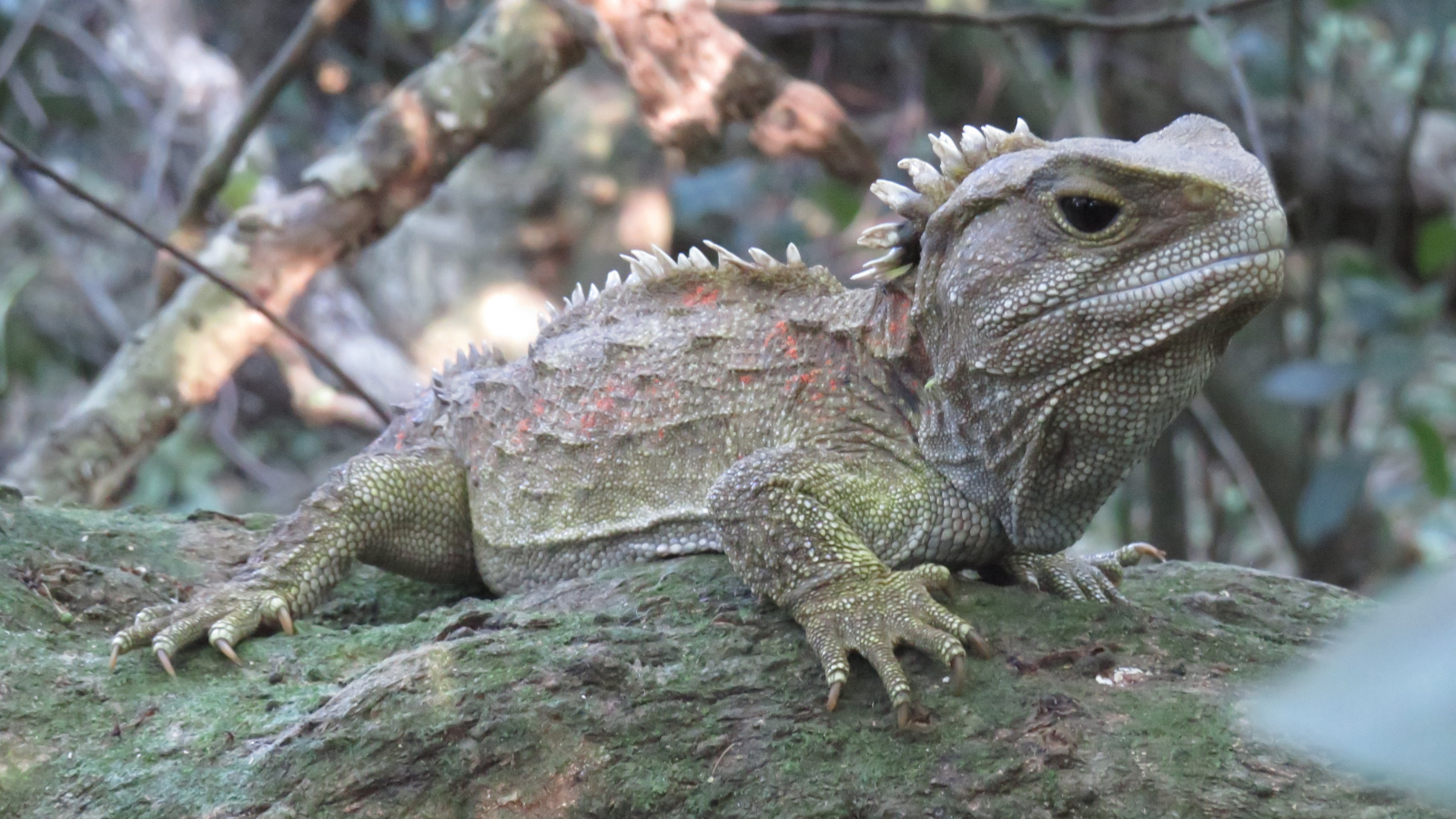
The study, published in Conservation Physiology, found tuatara sperm are fast moving and a whopping three times longer than human sperm.
Lead author and Visiting Scholar Dr Sarah Lamar says tuatara sperm have an average total length of 166 micrometres—less than one-fiftieth of a centimetre—bearing the same three-part sperm structure seen across the animal kingdom, but with a much longer head and tail than body.
However, the viability of the tuatara’s speedy sperm is hugely variable, says Dr Lamar, who carried out the research as part of her PhD in Ecology and Biodiversity at the University, supervised by Professor Nicola Nelson and Dr Diane Ormsby from the School of Biological Sciences.
“The sperm samples we collected had a broad range of viability, all the way from 3.38 to 94.5 percent, with an average of 58.8 percent. This average is lower than that for many other reptiles and highlights a need to assess the viability of sperm from male tuatara before including them in any planned conservation activities, such as starting new populations.”
Dr Lamar says reptiles are facing an extinction crisis with an estimated one in five reptiles globally under threat. Tuatara are listed as “at risk—relict” by the Department of Conservation, meaning the population is small, but stable, after a period of decline.
Understanding more about the biology of tuatara sperm is critical to the conservation of this taonga, she says.
“This study greatly improves our understanding of tuatara reproduction and provides key reference metrics for males being considered for use in future conservation activities, and for animals kept in captivity.
“These references can be used to help assess the fertility of tuatara held in captivity and inform the selection of males for translocations and population supplementations. A better understanding of male tuatara fertility is key to ensuring we maintain adequate genetic diversity.”
The tuatara sperm were collected from mating tuatara on Takapourewa Stephens Island, in the Cook Strait, during summer over two consecutive years. The sperms’ structure, viability, and swim speed were then assessed.
“Managing a species of concern can be best achieved when there is information on the reproductive characteristics of the animal, so baseline research like this is critical to ensure their survival.
“Tuatara live in isolated island populations and the looming threat of localised extinctions due to the effects of ongoing and worsening human-induced climate change is significant.
“We want to be in a position to support their viability long into the future.”
